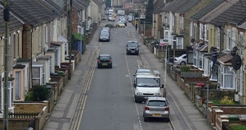 Relationally mapping your neighbourhood
Relationally mapping your neighbourhood
From personal experience and a resource by KC Underground
I (Geoff) frequently travelled to Japan on business in the late 1990's and always stopped off in Seoul, Korea to spend time at the Yoido Full Gospel Church and their prayer mountain. The church based in one main building and various satellite locations had about 750,000 members and 1500 pastors at the time with neighbourhood groups on every street in Seoul (a city then of 8M people).
One of the many things I learned was that the neighbourhood groups had the DNA of 'nosey evangelism'. This involved the group making a map of their neighbourhood and adding details of residents as they were discovered. The group continually prayed for the residents and listened out for needs - finding a need and meeting it.
For instance, if a family had less income due to job loss, one or two of the group would call upon the family and find out their needs. As well as tithing their money, church members also tithed their rice and donated clothes and other items. So if the need was food, the group would collect food from the church storehouse and give it to the family. They also offered to pray for them (as a group) and keep checking back with them how things were going, building relationship. After some time, the family heads would be asked to come and say thank you to the group and that led to more questions, etc., and more steps on their spiritual journey.
[Contrast this with the centralised approach with Foodbanks - 'nosey evangelism' has a much deeper involvement with a family, a wide, distributed network of volunteers, broader needs known and addressed, specific prayer, a very local relationship built with ability to follow up.]
Sometimes the issue was illness and again, one or two of the group would call upon the family and offer to pray for healing. Again, this would continue until there was an outcome.
When Yoido FG Church decided to plant into Japan, local Japanese leaders were quite negative due to their experience of low church growth. (If I remember the average size of a church was around 60 people at the time.) But one of the Yoido Neighbourhood Group leaders went to Tokyo and lived in a high rise apartment block. She found out who was living in the block, prayed and practised 'nosey evangelism', and within a year, over 100 people were saved.
So I read with interest about a resource used by the KC Underground micro-church network. Details are as follows:
Before we can begin blessing our neighbours or the people in our network of relationships, we have to know where our primary calling is and know the people who also exist in those places.
A Relational Map exercise helps us begin to do that (see later).
That's been borrowed from a book, 'The Art of Neighboring' by Dave Runyon and Jay Pathak. They demonstrate that less than 10% of people who claim to be Christian can actually tell you the first and last names of their eight closest neighbours. Less than 3% can tell you those names and then some other detail beyond what you could observe from their driveway. Less than 1% can tell you the first and last names of their eight closest neighbours, something you couldn’t observe from the driveway, or their greatest hopes or greatest fears.
Those are some sobering numbers. What this is indicating is that we don’t know our neighbours. How can we love our neighbours if we don’t know who they are, or even their names?
1. Before filling in a Relational Map with names and information as you begin to invest intentionally in your neighbourhood or network of relationships, the first step is to pick a primary place of "sentness". Where do you have the strongest sense of “sentness” from the Spirit? Is it where you live, work, study, or play? Which one is Jesus highlighting and saying, “Here is where I want you to engage your time and your resources?”
2. Using the map in article (see link below), fill in the names in the boxes, beginning with yours and continuing with those around you. Who are the people in that relational network? The map could be a neighbourhood, a workspace with desks, for example.
3. Describe the people. In each little box, list keywords that describe that person. Think about how much you know or don’t know the people. Don’t beat yourself up if you can’t name many things. You can take intentional steps now to consider exploratory questions to learn their story.
4. Describe the place if you can. In the margin, list keywords that describe your neighbourhood or network of relationships.
5. Light bulbs. Where do you see openness and invitation? Put a light bulb by those names. If someone seems more interested spiritually, highlight that person. Double down on your prayers for these people.
6. What would blessing look like in relationship to them? What are some ideas that you have about how you might begin to serve these people or share meals with them? Record some ideas.
See the full article here.
There is also a 3 minute video here:
Retweet about this article:
From personal experience and a resource by KC Unde, 17/06/2025